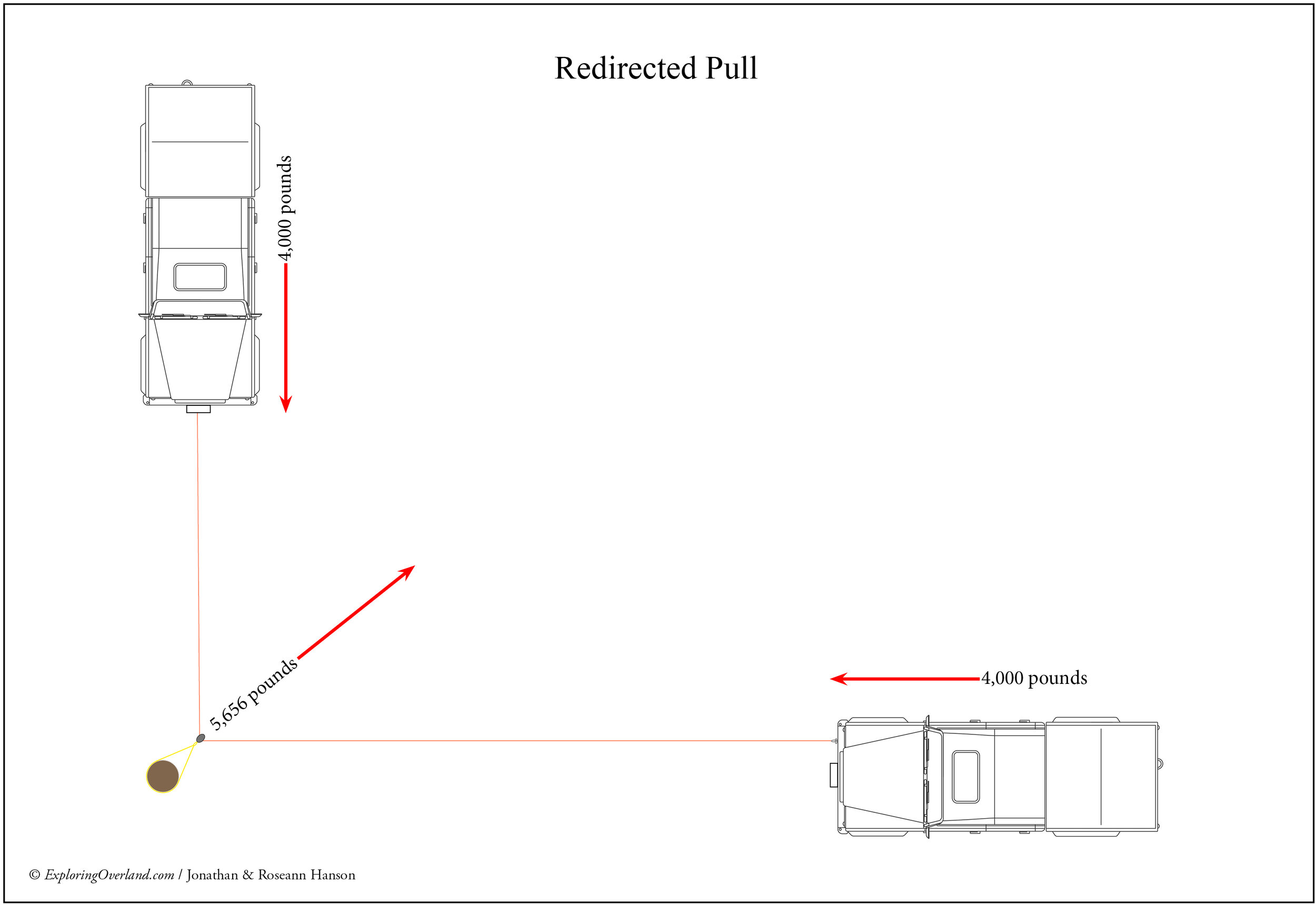In another demonstration of reverse winching, a cheerful Aussie bloke uses a kinetic strap as a tree saver—pretty much the most egregious never-do-this move you can make when rigging a winch recovery.
However, a recent video I watched, from Bold Canyon Outdoors, was in a way even more confusing, as it boasted decent production values, a well-spoken host, and significantly better equipment. The video offered a basic guide to winching, including a single, double, and triple-line pull.
It started out with a bit of humor, which was fun. But after the host brought out the winch kit he was using—and heavily promoting—from a company called Gear America, and began discussing the procedure, things began to go south. If I went through the video again I could probably pick out more goofs, but what I noticed immediately included the following.
First, he simply introduced a Jeep Wrangler with a winch. He said nothing about winch selection, sizing, mounting—the winch was simply there, taken for granted.
Then, when he introduced the “Gear America Ultimate Winching and Rigging Off Road Recovery Kit” (yes, really), he made no mention of matching the kit to the winch, no mention of working load limits (WLL) or minimum breaking strength (MBS) of the shackles or snatch block. He pulled out a “tow strap” included in the kit. Was it truly a tow strap, or a kinetic-recovery strap? Big difference. You can use an elastic recovery strap to tow with, but it would be dangerous to use a non-elastic tow strap as a kinetic recovery strap. He referred to the bow shackles in the kit as D-rings—not a big deal, you might say, but the little mistakes and omissions were quickly adding up to a not-very-credible presentation.
When the host ran the winch line out to a tree to use as an anchor, he mentioned nothing about choosing an appropriate (i.e. live and large enough) tree to take the strain. He also, critically, failed to check overhead for dead limbs that could be dislodged by the stress of winching. He properly employed a tree saver strap, but positioned it above waist height. A tree strap should be positioned as low as possible to reduce stress on the tree. Finally, when he connected the winch line to the tree strap with a bow shackle, he specified that the shackle pin should be “snug”—an elementary beginner’s mistake. A shackle pin should be snugged, then backed off a quarter turn or so. This is not a safety issue, but a way to ensure the pin doesn’t jam under load.
He then properly advocated employing a winch line damper to help control a recoiling line if a component in the system breaks. He placed the weight in the middle of the line. This is a small point, but I prefer placing the damper closer to the end of the line where the shackle and winch hook are—those are the heavy bits that represent the most danger should either or both come loose.
Next the host demonstrated a double line pull. While doing so, he introduced the Gear America snatch block, and noted that it is “suitable for either synthetic or steel winch line.”
Ugh.
The Gear America snatch block has a steel pulley with what looks like a standard semi-circular groove for the line. That’s perfectly suited for steel cable. A snatch block for synthetic line should ideally have a composite pulley. More to the point, while the steel Gear America pulley could be used with synthetic line, you would certainly not want to do so once it had been used with steel cable, and you most definitely would not want to swap back and forth. Steel cable will leave micro-abrasions on the pulley that are not good for synthetic line. (For the same reason, a winch fairlead—whether hawse or roller—that has been used with steel cable should be replaced if synthetic line is installed on the winch.)
I looked up Gear America, which seems to specialize in low-cost recovery equipment. The “Gear America Ultimate Winching and Rigging Off Road Recovery Kit” actually comprises a pretty basic assortment of kit, including what the website lists as a “tow strap.” Hmm. So I looked up that product separately, and found its description: “Use it as a Tow Strap, Recovery Strap, Tree Saver Strap or Winch Extension Strap, making it an extremely versatile product.”
Oh brother.
I looked at the construction, which is polyester, meaning there will be very little stretch in this thing. Therefore the suggested use as a “recovery strap” is highly problematic, since a recovery strap is commonly made from nylon and designed to stretch and absorb shock when it is used in a kinetic recovery. A novice who had looked at just enough YouTube “instructional” videos to have a vague idea of how to snatch a stuck vehicle could easily break something or rip off a bumper by backing up and taking a run at moving a bogged vehicle with this “multi-purpose” strap. At least the site lists the MBS and WLL of the strap (35,000 and 12,000 lb).
Next I looked at the bow shackles included with the not-going-to-write-it-all-out-again recovery kit—which are actually described there as “D-ring shackles.” They’re 3/4-inch versions, a standard size in thousands of recovery kits, and properly stamped “WLL 4 3/4T,” or 9,500 pounds. With a standard six-to-one safety factor on shackles that works out to a 57,000-pound MBS. However, the description right under the photo of the shackle and its stamp says it has a “10,500-lb WLL and 58,000-lb MBS.” Hmm . . .

























